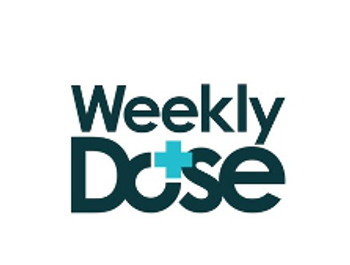
Tirzepatide Associated with "Impressive" BP Reduction in Individuals with Obesity
Mean placebo-adjusted SBP change from baseline at 36 weeks was 8.6 mm Hg in adults with obesity, according to authors of the SURMOUNT-1 ABPM substudy.
The novel dual incretin agonist-based
Specifically, compared with participants receiving placebo, tirzepatide-treated participants (mean BMI 37.4 kg/m2) achieved mean 24-hour ABPM reductions of 7.4 mm Hg (tirzepatide 5 mg), 10.6 mm Hg (10 mg), and 8.0 mm Hg (15 mg) over the 36-week study period.1 Moreover, the investigators emphasized that the results were consistent for overnight as well as daytime BP and consistent across study subgroups.1
“Although tirzepatide has been studied as a weight loss medication, the blood pressure reduction in our patients in this study was impressive. While it is not known if the impact on blood pressure was due to the medication or the participants’ weight loss, the lower blood pressure measures seen with tirzepatide rivaled what is seen for many hypertension medications,” lead study author James A de Lemos, MD, Kern Wildenthal, MD, PhD distinguished chair of cardiology and a professor of medicine at UT Southwestern Medical Center in Dallas, said in a press statement from the American Heart Association.2
SURMOUNT-1
SURMOUNT-1, part of the tirzepatide clinical trial program, was a double-blind randomized, placebo-controlled trial to assess the effects of once-weekly subcutaneous tirzepatide dosed at 5 mg, 10 mg, or 15 mg on weight loss. The trial enrolled 2539 patients with a BMI of 30 kg/m2 or greater or 27 kg/m2 plus at least 1 weight-related complication, excluding diabetes, and assigned them randomly in a 1:1:1:1 ratio to the study treatments and placebo.1
Overall, SURMOUNT-1 participants who received tirzepatide lost between 16% and 22.5% of their baseline bodyweight.3 The majority experienced at least 5% weight loss over the 72-week study and body weight change among more than half who received the highest dose, 15 mg, was at least 20%.3
According to de Lemos and colleagues, tirzepatide in SURMOUNT-1 also reduced office-measured BP. The planned substudy was designed to assess the effects specifically on 24-hour ABP and enrolled 600 of the original study participants.1
ABPM Substudy1
All substudy participants had BP levels less than 140/90 mm Hg, and if taking medication for hypertension were required to have been on stable doses for at least 3 months when the substudy began.1 Among these participants, 145 were assigned to tirzepatide 5 mg, 152 to tirzepatide 10 mg, 148 to tirzepatide 15 mg, and 155 assigned to placebo.
Mean age was 45.5 years, the majority were women (68.7%) and were White (66.8%). Mean BMI was 37.4 kg/m2. According to the study, 30% of the participants reported hypertension at baseline and 29% reported use of at least 1 antihypertensive medication. Of the 600 enrolled, 494 had valid data for ABP at baseline and week 36. The baseline mean 24-hour systolic BP was 124.6 mm Hg, with no between-group differences.1
de Lemos and team reported placebo-adjusted systolic BP changes from baseline for the 3 tirzepatide doses as1:
- 5 mg: −7.4 (95% CI, −10.0 to −4.7) mm Hg
- 10 mg: −10.6 (95% CI, −13.2 to −8.0) mm Hg
- 15 mg: −8.0 (95% CI, −10.6 to −5.4) mm Hg
When they analyzed pooled tirzepatide doses the investigators found that changes in 24-hour systolic BP correlated with change in body weight (r = .31; P < .001). Using mediation analyses they found that changes in ambulatory systolic blood pressure were partially mediated by weight changes (percentage mediated, 70.0%; 95% CI, 47.0 to 102.6).1
The team’s analysis of change from baseline in 24-hour diastolic blood pressure at week 36 was less dramatic across the 3 tirzepatide doses1:
- 5 mg: -2.0 (95% CI, -3.6 to -0.3) mm Hg
- 10 mg: -2.9 (95% CI, -4.5 to -1.3) mm Hg
- 15 mg: -0.5 (95% CI, -2.0 to 1.1) mm Hg
Their findings were consistent across a range of clinically relevant and potentially confounding factors including age, sex, BMI, and hypertension-related factors, according to the results.1
The investigators also reported an increase in heart rate among tirzepatide-treated participants compared to those who received placebo but explained the uptick was “expected” based on findings from other studies of GLP-1 receptor agonists in people with obesity. At 36 weeks increases in heart rate relative to placebo were 2.1 (95% CI, 0.3 to 3.9), 2.3 (95% CI, 0.6 to 4.1), and 5.4 (95% CI, 3.6 to 7.1) beats per minute with tirzepatide 5, 10, and 15 mg, respectively, at week 36 compared to baseline. However, the increases may attenuate, they explained further, citing much smaller increases by dose after 72 weeks in the broader SURMOUNT-1 trial.1
"...the lower blood pressure measures seen with tirzepatide rivaled what is seen for many hypertension medications.”
A key strength of the substudy, the authors wrote, is the use of 24-hour ABPM, which provides a “more comprehensive” assessment of BP trends vs in-office measurements. Among the limitations they described were inclusion of a limited subset of SURMOUNT-1 participants, recording only 2 ABPM measurements, and the lack of data on changes in food intake over the study period as well as on 24-hour urine sodium excretion.1
“Overall, these data are encouraging that novel weight-loss medications are effective at reducing body weight and they are also effective at improving many of the cardiometabolic complications of obesity including hypertension, type 2 diabetes and dyslipidemia, among others, Michael E Hall, MD, MS, chair of the writing group for the Association’s 2021 scientific statement on weight-loss strategies for prevention and treatment of hypertension and chair of the department of medicine at the University of Mississippi Medical Center in Jackson, Mississippi, said in the AHA press statement.2 He added that strategies such as pluripotent medications that “mitigate multiple obesity-related complications may reduce the risk of cardiovascular events.”2
Tirzepatide is approved by the US Food and Drug Administration as an adjunct to diet and exercise to lower hyperglycemia in adults with type 2 diabetes (Mounjaro) and for chronic weight management in adults with overweight and related complications or obesity (Zepbound).
References:
1. de Lemos JA, Linetzky B, le Roux CW, et al. Tirzepatide reduces 24-hour ambulatory blood pressure in adults with body mass index ≥27 kg/m2: SURMOUNT-1 ambulatory blood pressure monitoring substudy. Hypertension. Published online February 02, 2024. doi:10.1161/HYPERTENSIONAHA.123.22022 2. American Heart Association. New weight loss medication may help lower blood pressure in adults with obesity. News release. American Heart Association. February 5, 2024. Accessed February 5, 2024. https://newsroom.heart.org/news/new-weight-loss-medication-may-help-lower-blood-pressure-in-adults-with-obesity
3. Halsey G. Tirzepatide Treatment Leads to Weight Loss of up to 22.5% in SURMOUNT-1 Clinical Trial. Patient Care. June 4, 2020. https://www.patientcareonline.com/view/tirzepatide-treatment-leads-to-weight-loss-of-up-to-22-5-in-surmount-1-clinical-trial
Newsletter
Enhance your clinical practice with the Patient Care newsletter, offering the latest evidence-based guidelines, diagnostic insights, and treatment strategies for primary care physicians.































































































































































































































































































